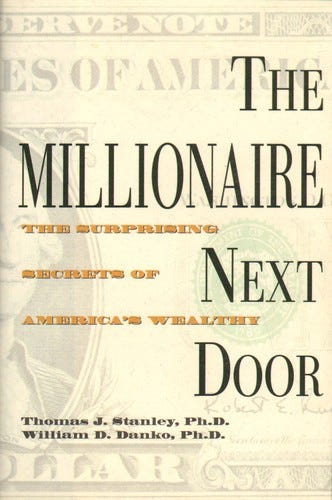Five Books that Make you Financial Freedom


1. Rich Dad Poor Dad
“Rich Dad Poor Dad” is a personal finance book written by Robert Kiyosaki. The book revolves around the author’s two influential father figures — his own highly educated but financially struggling “poor dad” and his friend’s less educated but wealthy “rich dad.” Kiyosaki highlights the contrasting financial mindsets and approaches to money that he learned from each father.
One quote from the book is, “The poor and the middle-class work for money. The rich have money work for them.” This emphasizes the importance of shifting from an employee mindset to a mindset that focuses on creating assets and passive income streams.
Another quote is, “The single most powerful asset we all have is our mind. If it is trained well, it can create enormous wealth.” This quote highlights the significance of financial education and developing a mindset geared towards wealth creation.
“Rich Dad Poor Dad” encourages readers to question traditional beliefs about money, to invest in assets that generate income, and to strive for financial independence. It emphasizes the importance of financial literacy, taking risks, and developing a mindset of abundance.

2. The Millionaire Next Door
“The Millionaire Next Door” by Thomas J. Stanley and William D. Danko is a renowned book that challenges the perception of wealth and reveals the habits and characteristics of self-made millionaires. The authors conducted extensive research and found that many affluent individuals live modestly and prioritize frugality, discipline, and smart financial decisions. The book emphasizes the importance of living below one’s means, saving and investing wisely, and avoiding excessive consumption. It also highlights the significance of financial education and passing on money management skills to future generations. One famous quote from the book is, “The foundation stone of wealth accumulation is defense, and this defense should be anchored by budgeting and planning.” Another notable quote is, “Income is not the wealth determinant; it is what you do with the income that determines wealth.”

3. Think and Grow Rich
Think and Grow Rich” by Napoleon Hill is a classic self-help book that explores the mindset needed for success and wealth creation. Hill emphasizes the power of positive thinking, setting clear goals, and persistence. The book delves into the principles of success and shares stories of individuals who achieved great wealth. Some of its famous quotes include “Whatever the mind can conceive and believe, it can achieve” and “Success comes to those who become success-conscious.” Hill’s teachings focus on the importance of developing a burning desire, taking decisive action, and surrounding oneself with like-minded individuals. It serves as a guide for transforming thoughts into tangible wealth and success.

4. The Intelligent Investor
“The Intelligent Investor” by Benjamin Graham is a classic investment book that emphasizes the principles of value investing. It encourages investors to focus on the long-term prospects of a company and buy stocks when they are undervalued. One of the famous quotes from the book is, “The stock market is filled with individuals who know the price of everything, but the value of nothing.” Graham’s book teaches readers to analyze stocks, manage risk, and avoid speculative behavior. It remains a highly regarded resource for investors seeking a rational and disciplined approach to investing

5. The Total Money Makeover
“The Total Money Makeover” by Dave Ramsey is a practical guide to achieving financial freedom. Ramsey’s famous quote, “Live like no one else, so later you can live and give like no one else,” encapsulates his approach. The book emphasizes getting out of debt, creating an emergency fund, and developing a solid financial plan. Ramsey provides a step-by-step process, known as the Baby Steps, to guide readers on their journey to financial stability and wealth building. It advocates for disciplined budgeting, eliminating debt, and making smart money decisions.

Comments